Are you a proud dog owner looking to keep your furry friend’s coat in tip-top condition? A shiny, healthy coat not only enhances your dog’s appearance but also indicates good overall health. However, achieving and maintaining a luscious coat requires more than just occasional brushing. In this complete guide, we’ll delve into the tips and tricks for conditioning your dog’s coat to keep it radiant and healthy.
Contents Overview
Understanding Dog Coat Types
Dog coat types vary widely among breeds, each serving specific purposes and requiring tailored grooming techniques. Understanding your dog’s coat type is essential for effective grooming and coat maintenance. Let’s explore the characteristics of different coat types:
- Double Coat:
- Description: Double-coated breeds possess two layers of fur: a dense, soft undercoat and a coarser topcoat or guard hairs.
- Purpose: The undercoat provides insulation, keeping dogs warm in cold weather, while the topcoat repels moisture and dirt.
- Examples: German Shepherd, Siberian Husky, Golden Retriever.
- Grooming Needs: Requires regular brushing to remove loose undercoat hair and prevent matting. Shedding is usually heavy during seasonal changes, known as “blowing coat.”
- Smooth Coat:
- Description: Smooth-coated breeds have short, sleek fur lying close to the body.
- Purpose: Offers minimal protection against weather elements but requires less grooming maintenance.
- Examples: Beagle, Doberman Pinscher, Dalmatian.
- Grooming Needs: Weekly brushing with a bristle brush helps remove loose hair and distribute natural oils. Bathing frequency can be lower compared to double-coated breeds.
- Wire Coat:
- Description: Wire-coated breeds feature rough, wiry fur that stands away from the body.
- Purpose: Provides protection against harsh terrain and weather conditions.
- Examples: Terriers (e.g., Wire Fox Terrier, Scottish Terrier), Schnauzers.
- Grooming Needs: Requires regular hand-stripping or grooming with a stripping comb to maintain texture and remove dead hair. Occasional trimming may be necessary to shape the coat.
- Curly Coat:
- Description: Curly-coated breeds have tightly curled or wavy fur.
- Purpose: Offers insulation and protection against water, making them well-suited for water activities.
- Examples: Poodle, Bichon Frise, Irish Water Spaniel.
- Grooming Needs: Regular brushing with a slicker brush helps prevent matting and tangling. Professional grooming for shaping and maintaining coat texture is recommended.
- Long Coat:
- Description: Long-coated breeds feature flowing, luxurious fur that requires extra attention.
- Purpose: Provides insulation and protection, but may require more grooming to prevent matting and tangling.
- Examples: Afghan Hound, Cavalier King Charles Spaniel, Shih Tzu.
- Grooming Needs: Daily brushing with a pin brush and comb to prevent mats and tangles. Professional grooming for trimming and shaping may be necessary.
- Hairless Coat:
- Description: Hairless breeds lack a traditional fur coat, with varying degrees of hairlessness across the body.
- Purpose: Adapted for warm climates, hairless breeds may require protection from sun exposure and temperature extremes.
- Examples: Chinese Crested, Mexican Hairless (Xoloitzcuintli), American Hairless Terrier.
- Grooming Needs: Requires skincare to prevent sunburn, moisturize the skin, and protect against environmental irritants. Regular bathing and sunscreen application may be necessary.
Understanding your dog’s coat type allows you to tailor grooming routines and care practices to ensure their coat remains healthy, shiny, and free from matting or skin issues. Consultation with a veterinarian or professional groomer can provide additional guidance on caring for specific coat types.
Regular Brushing
Regular brushing is a fundamental aspect of maintaining your dog’s coat health and overall well-being. It offers numerous benefits, including removing loose hair, distributing natural oils, preventing matting, and promoting healthy skin. Here’s a comprehensive look at the importance of regular brushing and how to do it effectively:
Benefits of Regular Brushing
- Removes Loose Hair: Brushing helps remove loose and dead hair from your dog’s coat, reducing shedding and minimizing the spread of fur around your home.
- Distributes Natural Oils: Brushing distributes natural oils throughout your dog’s coat, keeping it moisturized, shiny, and healthy.
- Prevents Matting and Tangling: Regular brushing prevents mats and tangles from forming in your dog’s fur, which can be painful and lead to skin irritation.
- Stimulates Blood Circulation: Brushing stimulates blood circulation to the skin, promoting overall skin health and encouraging new hair growth.
- Bonding Opportunity: Brushing provides an excellent opportunity for bonding between you and your dog, fostering trust and strengthening your relationship.
How to Brush Your Dog's Coat
- Choose the Right Brush: Select a brush appropriate for your dog’s coat type. Options include slicker brushes, bristle brushes, pin brushes, and grooming gloves.
- Establish a Routine: Set a regular brushing schedule based on your dog’s coat length and shedding frequency. Short-haired breeds may only require weekly brushing, while long-haired breeds may need daily attention.
- Prepare Your Dog: Before brushing, ensure your dog is calm and comfortable. Offer treats and praise to create a positive association with grooming.
- Brush Methodically: Start at your dog’s head and work your way down to the tail, brushing in the direction of hair growth. Use gentle, but firm strokes, being mindful of sensitive areas like the belly and armpits.
- Pay Attention to Problem Areas: Focus on areas prone to matting, such as behind the ears, under the legs, and around the tail. Use a dematting tool or detangling spray if necessary.
- Check for Signs of Skin Issues: While brushing, inspect your dog’s skin for any abnormalities, such as redness, lumps, or parasites. Consult your veterinarian if you notice any concerning symptoms.
- Finish with a Reward: Once brushing is complete, reward your dog with praise, treats, or a favorite activity, reinforcing positive behavior during grooming sessions.
Tips for Successful Brushing
- Be patient and gentle, especially if your dog is not accustomed to brushing.
- Use treats and praise to make grooming a positive experience.
- Choose a quiet, comfortable environment free from distractions.
- Invest in high-quality grooming tools suited to your dog’s coat type.
- Seek professional grooming assistance for breeds with specialized grooming needs or if you encounter difficult matting or coat issues.
By incorporating regular brushing into your dog’s grooming routine, you’ll not only keep their coat looking and feeling great but also strengthen your bond with your furry companion. Enjoy the benefits of a well-maintained coat and the joy of spending quality grooming time with your beloved pet.
Proper Bathing Techniques
Bathing your dog is an essential part of maintaining their hygiene and coat health. However, improper bathing techniques can lead to skin irritation, dryness, and coat damage. To ensure a safe and effective bathing experience for your furry friend, follow these comprehensive guidelines:
- Determine Bathing Frequency:
- The frequency of bathing depends on your dog’s breed, activity level, and skin condition. Generally, most dogs benefit from bathing every 4-6 weeks, but some may require more frequent baths if they spend a lot of time outdoors or have skin issues. Avoid over-bathing, as it can strip away natural oils and cause dryness.
- Gather Necessary Supplies:
- Dog-specific shampoo: Choose a mild, pH-balanced shampoo formulated for dogs to avoid skin irritation.
- Towels: Have several towels on hand for drying your dog after the bath.
- Washcloth or sponge: Useful for cleaning sensitive areas like the face.
- Non-slip mat: Place a non-slip mat in the bathtub or shower to prevent your dog from slipping.
- Prepare Your Dog:
- Brush your dog’s coat before bathing to remove tangles and loose hair.
- Trim your dog’s nails if necessary to prevent scratching during the bath.
- Place cotton balls in your dog’s ears to prevent water from entering the ear canal and causing infections.
- Wet Your Dog:
- Use lukewarm water to wet your dog’s coat thoroughly. Avoid spraying water directly into your dog’s face, ears, or eyes.
- Start from the neck and work your way down to the tail, ensuring all areas are wet.
- Apply Shampoo:
- Dilute the shampoo with water according to the instructions on the bottle.
- Apply shampoo to your dog’s coat, starting from the neck and working your way down to the tail. Gently massage the shampoo into the fur, focusing on areas that are particularly dirty or smelly.
- Be careful around sensitive areas like the face, ears, and genital area. Use a washcloth or sponge to clean these areas.
- Rinse Thoroughly:
- Thoroughly rinse your dog’s coat with lukewarm water to remove all traces of shampoo. Inadequate rinsing can lead to skin irritation and residue buildup.
- Pay special attention to areas where shampoo tends to accumulate, such as under the legs and between toes.
- Towel Dry:
- Use towels to gently pat your dog’s coat dry. Avoid rubbing vigorously, as it can cause tangles and matting.
- If your dog tolerates it, you can use a blow dryer on a low, cool setting to speed up the drying process. Keep the dryer at a safe distance to prevent overheating.
- Finish with Positive Reinforcement:
- Praise and reward your dog for their cooperation during the bath. This helps create a positive association with bathing and reinforces good behavior.
- Offer treats, verbal praise, or a favorite toy as a reward for a job well done.
Additional Tips:
- Use a gentle touch and speak in soothing tones to keep your dog calm and relaxed during the bath.
- Avoid getting water or shampoo in your dog’s eyes, ears, or mouth.
- If your dog has skin allergies or sensitivities, consult your veterinarian for recommendations on hypoallergenic shampoos or medicated baths.
- Regular grooming and maintenance between baths, such as brushing and spot cleaning, can help keep your dog’s coat clean and fresh.
By following these proper bathing techniques, you can ensure a safe, comfortable, and enjoyable bathing experience for both you and your beloved canine companion. Enjoy the bonding time and the satisfaction of having a clean, healthy pup!
Nutrition for Healthy Coats
A shiny, lustrous coat is often a sign of good health in dogs, and proper nutrition plays a crucial role in achieving and maintaining coat health. By providing your furry friend with a balanced diet rich in essential nutrients, you can support healthy skin, promote hair growth, and enhance the overall appearance of their coat. Here’s a detailed explanation of the key nutrients and dietary considerations for a healthy coat:
- Protein:
- Role: Protein is essential for building and repairing tissues, including hair follicles. It provides the building blocks (amino acids) necessary for healthy coat growth.
- Sources: High-quality animal protein sources such as chicken, turkey, beef, and fish are ideal for meeting your dog’s protein needs.
- Considerations: Ensure that protein is a primary ingredient in your dog’s diet, with a balance of essential amino acids.
- Omega-3 Fatty Acids:
- Role: Omega-3 fatty acids, particularly EPA (eicosapentaenoic acid) and DHA (docosahexaenoic acid), are crucial for maintaining skin health and coat luster. They have anti-inflammatory properties that can alleviate skin conditions like itching and flakiness.
- Sources: Fish oil, flaxseed oil, and algae are excellent sources of omega-3 fatty acids. Alternatively, choose dog foods formulated with added omega-3s.
- Considerations: Ensure the omega-3 fatty acids are present in the correct ratio to omega-6 fatty acids for optimal absorption and effectiveness.
- Omega-6 Fatty Acids:
- Role: Omega-6 fatty acids are important for maintaining the integrity of the skin barrier and preventing moisture loss. They contribute to a healthy, shiny coat.
- Sources: Common sources of omega-6 fatty acids include poultry fat, sunflower oil, corn oil, and safflower oil. Many commercial dog foods contain omega-6 fatty acids as well.
- Considerations: While omega-6 fatty acids are essential, an imbalance between omega-6s and omega-3s can contribute to inflammation and skin issues. Aim for a balanced ratio.
- Vitamins and Minerals:
- Role: Various vitamins and minerals play a role in maintaining skin and coat health. Vitamin E, in particular, acts as an antioxidant, protecting skin cells from damage. Zinc is essential for skin integrity and wound healing.
- Sources: Vitamins and minerals can be found in a balanced, high-quality dog food diet. Alternatively, supplements may be recommended under the guidance of a veterinarian.
- Considerations: Avoid over-supplementation, as excessive levels of certain vitamins and minerals can be harmful. Always consult with a veterinarian before adding supplements to your dog’s diet.
- Water:
- Role: Adequate hydration is essential for maintaining skin moisture and preventing dryness. Water supports overall skin health and coat hydration.
- Sources: Provide your dog with access to fresh, clean water at all times. Wet dog food and fresh fruits and vegetables can also contribute to hydration.
- Considerations: Monitor your dog’s water intake and ensure they drink enough to stay properly hydrated, especially during hot weather or increased physical activity.
- Balanced Diet:
- Role: A balanced diet that meets your dog’s specific nutritional needs is key to maintaining overall health, including coat health. Choose high-quality dog food formulated to meet AAFCO (Association of American Feed Control Officials) standards.
- Considerations: Consult with a veterinarian to determine the appropriate diet for your dog based on factors such as age, breed, size, activity level, and any underlying health conditions.
By prioritizing nutrition and providing your dog with a balanced diet rich in essential nutrients, you can support healthy skin and a glossy, vibrant coat. Remember to consult with your veterinarian for personalized dietary recommendations tailored to your dog’s unique needs. With the right nutrition, your canine companion can flaunt a beautiful coat that reflects their inner health and vitality.
Supplements for Coat Health
While a balanced diet is the foundation of good coat health, supplements can provide additional support by targeting specific nutritional needs. Incorporating supplements into your dog’s regimen can help address deficiencies, promote skin and coat health, and enhance overall well-being. Here’s a comprehensive overview of the key supplements for coat health and their benefits:
- Fish Oil Supplements:
- Benefits: Rich in omega-3 fatty acids, particularly EPA (eicosapentaenoic acid) and DHA (docosahexaenoic acid), fish oil supplements promote healthy skin and coat by reducing inflammation, relieving itching, and enhancing coat shine.
- Sources: Fish oil supplements derived from sources like salmon, mackerel, and krill are readily available in liquid or capsule form.
- Dosage: Follow the recommended dosage provided on the supplement packaging or consult with your veterinarian for guidance based on your dog’s size and individual needs.
- Biotin Supplements:
- Benefits: Biotin, also known as vitamin B7, supports the production of keratin, a protein that forms the structure of hair and nails. Biotin supplements strengthen hair, reduce breakage, and promote healthy coat growth.
- Sources: Biotin supplements for dogs are available in tablet or soft chew form. Alternatively, biotin-rich foods such as eggs, liver, and brewer’s yeast can be included in your dog’s diet.
- Dosage: Follow the recommended dosage provided on the supplement packaging or consult with your veterinarian for guidance.
- Vitamin E Supplements:
- Benefits: Vitamin E is a powerful antioxidant that protects skin cells from damage caused by free radicals. It supports skin health, reduces inflammation, and promotes a soft, supple coat.
- Sources: Vitamin E supplements for dogs are available in various forms, including capsules, soft gels, and liquid formulations. Additionally, vitamin E-rich foods such as nuts, seeds, and leafy greens can be included in your dog’s diet.
- Dosage: Follow the recommended dosage provided on the supplement packaging or consult with your veterinarian for guidance.
- Zinc Supplements:
- Benefits: Zinc plays a crucial role in maintaining skin integrity, wound healing, and immune function. Zinc supplements support healthy skin, reduce itching and inflammation, and contribute to a shiny, lustrous coat.
- Sources: Zinc supplements for dogs are available in various forms, including tablets, capsules, and liquid formulations. Additionally, zinc-rich foods such as meat, fish, and dairy products can be included in your dog’s diet.
- Dosage: Follow the recommended dosage provided on the supplement packaging or consult with your veterinarian for guidance.
- Multivitamin Supplements:
- Benefits: Multivitamin supplements provide a comprehensive blend of essential vitamins and minerals to support overall health, including coat health. They can fill nutritional gaps in your dog’s diet and promote a healthy, glossy coat.
- Sources: Multivitamin supplements formulated specifically for dogs are available in tablet, soft chew, or powder form. Look for products containing a balanced combination of vitamins and minerals.
- Dosage: Follow the recommended dosage provided on the supplement packaging or consult with your veterinarian for guidance.
Considerations:
- Before introducing any supplements into your dog’s diet, consult with your veterinarian to ensure they are safe and appropriate for your dog’s individual needs.
- Choose high-quality supplements specifically formulated for dogs, as human supplements may contain ingredients that are harmful to dogs.
- Monitor your dog for any adverse reactions or changes in behavior after starting supplementation, and discontinue use if necessary under the guidance of your veterinarian.
By incorporating these supplements into your dog’s regimen, you can provide targeted support for coat health and enhance their overall well-being. Remember to prioritize a balanced diet and consult with your veterinarian for personalized recommendations tailored to your dog’s specific needs. With the right combination of nutrition and supplementation, your canine companion can enjoy a vibrant, healthy coat that shines from the inside out.
Protecting Against Environmental Factors
Environmental factors such as sun exposure, extreme weather conditions, and humidity can impact the health and appearance of your dog’s coat. By taking proactive measures to protect your furry friend from these elements, you can help maintain a healthy, shiny coat and prevent potential coat-related issues. Here’s a detailed explanation of how to protect your dog’s coat against environmental factors:
- Sun Protection:
- UV Exposure: Just like humans, dogs can experience sunburn and skin damage from prolonged exposure to ultraviolet (UV) radiation. Certain breeds with light-colored or thin coats are particularly susceptible.
- Preventive Measures: Limit your dog’s sun exposure, especially during peak hours (10 AM to 4 PM). Provide shade with a canopy or umbrella when spending time outdoors. Consider clothing or dog-safe sunscreen for added protection, especially on areas with sparse fur or pink skin.
- Cold Weather Protection:
- Extreme Temperatures: Cold weather can cause dryness, irritation, and even frostbite on your dog’s skin and coat. Breeds with short coats or low body fat are more vulnerable to cold-related issues.
- Preventive Measures: Provide adequate shelter and bedding to keep your dog warm and dry. Use dog coats or sweaters for breeds that are sensitive to cold temperatures. Limit outdoor exposure during freezing weather and consider indoor play options.
- Hot Weather Protection:
- Heat Exhaustion: Dogs can suffer from heat exhaustion and heatstroke in hot, humid conditions, leading to dehydration and skin issues. Breeds with thick coats or brachycephalic (short-nosed) breeds are especially at risk.
- Preventive Measures: Keep your dog hydrated with access to fresh water at all times. Avoid strenuous exercise during the hottest parts of the day and opt for early morning or evening walks instead. Provide shade and cool resting areas, and never leave your dog in a parked car.
- Protection Against Moisture:
- Fungal Infections: Moisture from rain, swimming, or high humidity can create favorable conditions for fungal infections and skin irritations in your dog’s coat.
- Preventive Measures: Towel dry your dog thoroughly after exposure to water. Use a blow dryer on a low, cool setting to remove excess moisture, especially in dense or long coats. Avoid leaving wet or damp fur for extended periods, as it can lead to skin issues.
- Environmental Allergens:
- Allergic Reactions: Pollen, grass, mold, and other environmental allergens can trigger allergic reactions in dogs, leading to itching, inflammation, and skin problems.
- Preventive Measures: Minimize your dog’s exposure to known allergens by keeping them indoors during peak allergy seasons. Wipe your dog’s paws and coat after outdoor activities to remove allergens. Consult with your veterinarian for allergy testing and management options.
- Regular Maintenance:
- Grooming: Regular grooming, including brushing and bathing, helps remove dirt, debris, and allergens from your dog’s coat, reducing the risk of skin issues. Trim long or dense coats to prevent matting and improve air circulation.
- Checkups: Schedule regular veterinary checkups to monitor your dog’s skin and coat health. Your veterinarian can identify and address any underlying issues early on, preventing them from worsening.
- Dietary Considerations:
- Nutrition: A balanced diet rich in essential nutrients, including omega-3 fatty acids, vitamins, and minerals, supports skin and coat health from the inside out. Ensure your dog’s diet provides all the necessary nutrients for a shiny, healthy coat.
By implementing these protective measures and preventive strategies, you can safeguard your dog’s coat against environmental factors and maintain its health and appearance. Stay vigilant, observe any changes in your dog’s coat or skin, and seek veterinary attention if you notice any concerns. With proper care and attention, your furry friend can enjoy a vibrant, resilient coat that shines in any environment.
Professional Grooming
Professional grooming plays a vital role in maintaining your dog’s overall health and appearance. While regular at-home grooming is essential, professional groomers offer specialized services and expertise to ensure your furry friend looks and feels their best. From coat trimming to nail clipping, professional grooming encompasses a range of services tailored to your dog’s specific needs. Here’s an in-depth explanation of professional grooming and its benefits:
- Services Offered:
- Bathing and Shampooing: Professional groomers use high-quality, dog-specific shampoos and conditioners to thoroughly clean your dog’s coat, removing dirt, debris, and odor.
- Coat Trimming and Styling: Groomers are skilled in trimming and styling different coat types, whether your dog needs a simple trim or a breed-specific cut. They can also shape the coat to enhance your dog’s appearance and maintain coat health.
- Nail Clipping: Trimming your dog’s nails is essential for preventing overgrowth, which can lead to discomfort, difficulty walking, and nail-related injuries. Groomers can safely trim your dog’s nails without causing pain or injury.
- Ear Cleaning: Proper ear hygiene is crucial for preventing infections and ear-related issues. Groomers can gently clean your dog’s ears and remove excess wax and debris.
- Teeth Brushing: Dental hygiene is an often-overlooked aspect of grooming. Groomers can brush your dog’s teeth to remove plaque and tartar buildup, promoting oral health and fresh breath.
- Anal Gland Expression: Groomers can perform anal gland expression to relieve discomfort and prevent impaction. This procedure should only be done by trained professionals to avoid injury.
- De-shedding Treatments: For breeds that shed heavily, groomers can perform de-shedding treatments to remove loose fur and reduce shedding, minimizing the amount of hair in your home.
- Skin and Coat Inspection: Groomers are trained to identify skin issues, parasites, and abnormalities during grooming sessions. Early detection allows for prompt treatment and prevents potential health problems.
- Benefits of Professional Grooming:
- Expertise and Skill: Professional groomers undergo extensive training and have the expertise to groom dogs of all breeds and coat types safely and effectively.
- Specialized Equipment: Grooming salons are equipped with specialized tools and equipment designed for grooming tasks, ensuring a comfortable and efficient grooming experience for your dog.
- Individualized Care: Groomers assess your dog’s coat condition, skin health, and grooming needs to tailor their services accordingly, providing personalized care for your furry friend.
- Time and Convenience: Professional grooming saves you time and effort, allowing you to entrust your dog’s grooming needs to trained professionals while you focus on other responsibilities.
- Health Monitoring: Regular grooming appointments provide an opportunity for groomers to monitor your dog’s overall health, including skin conditions, ear health, and dental hygiene.
- How to Choose a Professional Groomer:
- Research: Look for reputable grooming salons with experienced groomers and positive reviews from satisfied customers.
- Credentials: Ensure the groomers are trained, certified, and have experience working with dogs of various breeds and temperaments.
- Facility Cleanliness: Visit the grooming salon to assess cleanliness, organization, and overall hygiene standards.
- Communication: Choose a groomer who communicates effectively, listens to your concerns, and prioritizes your dog’s comfort and well-being.
- Price and Services: Consider the cost of grooming services and the range of services offered to ensure they meet your dog’s needs and your budget.
- Frequency of Professional Grooming:
- Regularity: The frequency of professional grooming appointments depends on your dog’s breed, coat type, and grooming needs. Most dogs benefit from grooming every 4-8 weeks, but some may require more frequent grooming sessions.
- Seasonal Changes: Dogs with double coats or heavy shedding may require more frequent grooming during seasonal changes to manage shedding and coat maintenance.
- Home Maintenance Between Grooming Appointments:
- Brushing: Regular brushing at home helps prevent mats, tangles, and shedding between grooming appointments.
- Bathing: Follow a regular bathing schedule at home using dog-specific shampoos and conditioners to keep your dog’s coat clean and healthy.
- Nail Trimming: Monitor your dog’s nail growth and trim them as needed between grooming appointments to prevent overgrowth and discomfort.
Professional grooming is an essential part of your dog’s overall care regimen, providing specialized services and expertise to maintain their health, hygiene, and appearance. By choosing a reputable groomer and scheduling regular grooming appointments, you can ensure your furry friend looks and feels their best year-round.
Bottom Line
A luscious coat is a reflection of your dog’s overall well-being, requiring proper care and attention. By understanding your dog’s coat type and implementing a comprehensive grooming routine, you can ensure they flaunt a radiant and healthy coat. From regular brushing and bathing to a balanced diet and professional grooming, these tips and tricks will help you achieve coat perfection for your beloved canine companion.

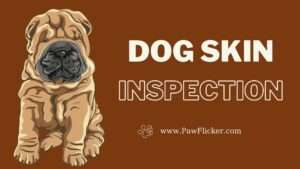
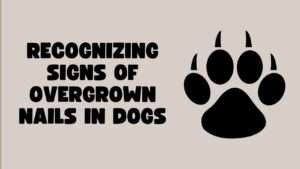
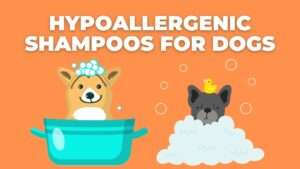
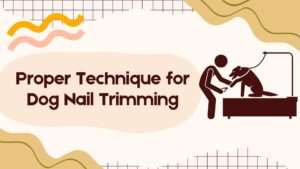
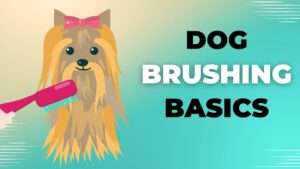
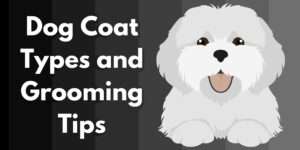
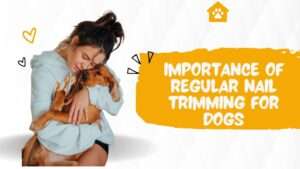
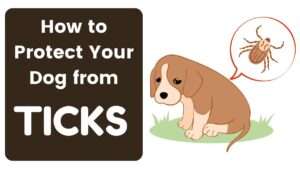
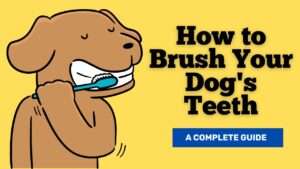
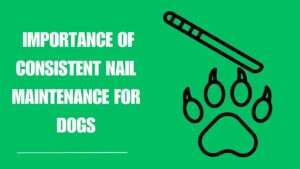
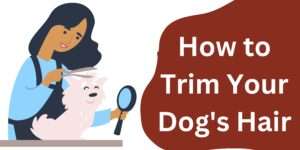
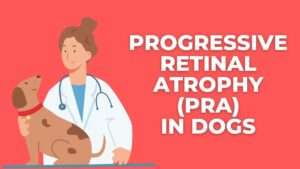
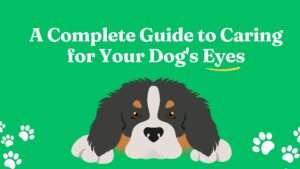

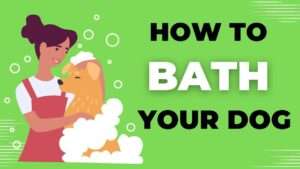
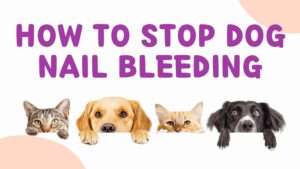
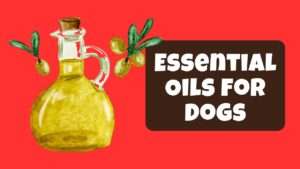
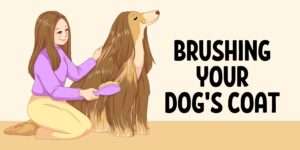

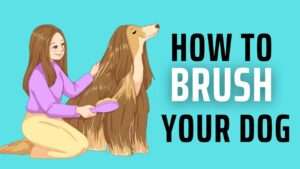
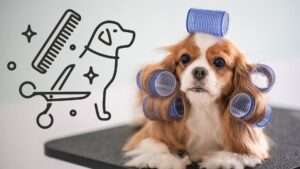
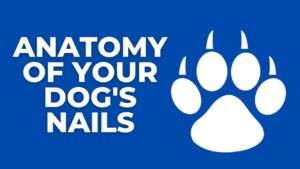
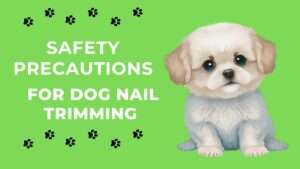







+ There are no comments
Add yours